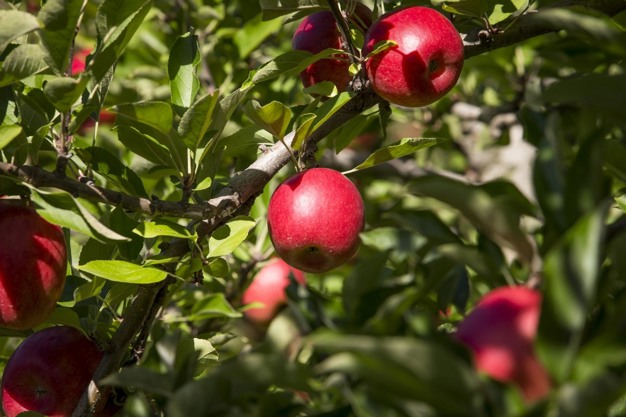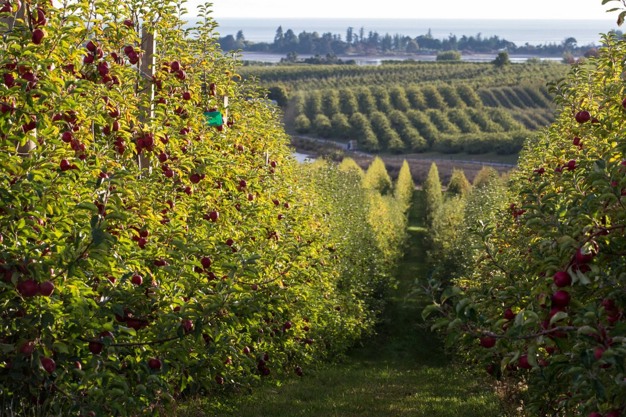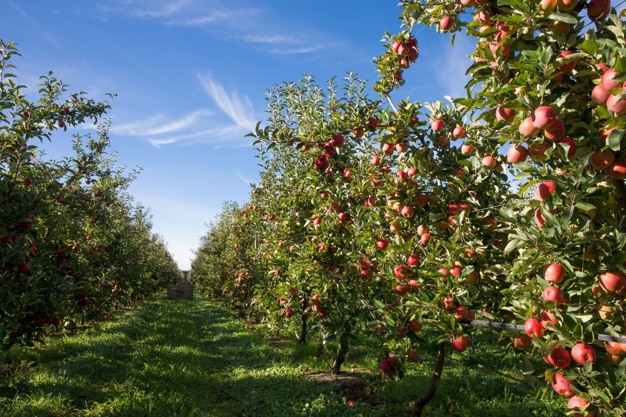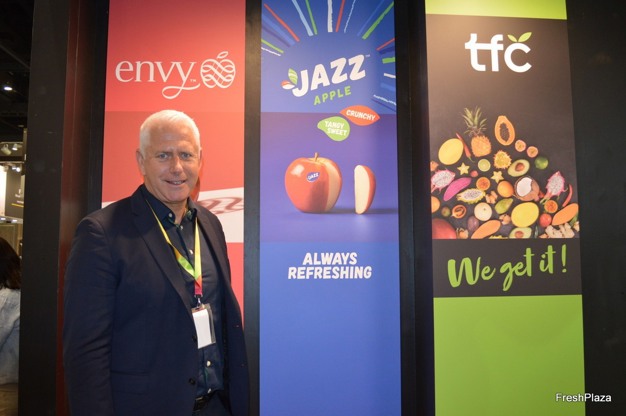It is almost exactly a year since New Zealand was hit by Cyclone Gabrielle, the cyclone hit just as the apple harvest was starting. Two out of the four main producing regions were hit, Hawke's Bay and Gisborne, while Nelson and Otago had good growing seasons.
"We had some orchards that were completely flattened by large bodies of water, which came down the valleys, leaving silt behind and others were flooded – this amounted to about 35% of our Hawke's Bay production," said Gareth Edgecombe, T&G Global CEO. "A small number of those orchards we will never get back again, for the remaining orchards we had to restore them by removing silt and nursing the trees back to health, generally the majority of our orchards have survived which is a tribute to the great people working there. The yields coming out of the region are pretty much back to pre-cyclone levels, which is pleasing, but there is still a huge amount of work to be done to fully restore the orchards."
The 2023-24 growing season has been good and the harvest of the early varieties has started. Volumes of both EnvyTM and JazzTM will be up this season at around 2.9 million boxes and 1.6 million boxes respectively.

Cost of recovery
Loss of business and costs incurred was a one-year thing and according to Gareth looking at production out to 2030 they will be back at 92-93% of full productivity, "We will lose some productivity but there is nothing we can do to get it back, even if we start today it will take years to get it back. I think this a similar position to most of the orchards, and we are all getting back on our feet."
Like most industries, the New Zealand apple growers are seeing an increase in costs, and also in many export markets the returns are slow to increase and don't match costs. "We are focusing on premium products and premium markets and trying to extract profit that way and it seems to be going pretty well."
Planting to meet demand
"We have been planting globally for the Envy program, which involves understanding forecast demand out to 2030-2035 and then bringing that back into a planting plan - and that means we have to plant more. We will plant more in Europe due to strong retail programs. We will also plant more in Washington and New Zealand to meet this demand. The impact of the cyclone on our balance sheet means we have to be more prudent about planting, we have prioritised capital for fixing Envy orchards, but also for our new variety JoliTM which we launched last year. We are still seeing pretty strong new planting going in, but at a slower rate than previously planned."
JazzTM continues to perform extremely well in the UK, while EnvyTM has tended to be stronger in Europe, with consumers in Italy, Spain and France. Gareth said that seems to relate to a preference for sweeter apples in the Mediterranean and temperate climates. This has also been the case in North America, Canada likes Jazz and Americans like Envy. Asia also goes for sweeter apples.

The new JoliTM apple
T&G Global commercialised the new variety Joli in 2023. Venture Fruit, part of the group, will continue to develop new plant varieties for the market. T&G Global have not launched a new brand since Envy many years ago.
"We screen a few thousand apples a year and Joli came up positive for the two main features; orcharding attributes and taste profile. Joli has come out with very good orchard attributes and good consumer attributes to the point where we felt it was worth putting another large scale brand into the market. If we put resource behind something we want to go all the way. This apple has a similar brix to Envy but a higher level of acidity, bringing it somewhere between the Envy and the Jazz apples, it a larger apple and it will be positioned as 'a large apple that people can share'.
T&G Global are testing the growing of the Joli apple in various locations, but plant material movement has been more difficult over the Covid years so New Zealand will be the first large scale planting but it will also be planted in Europe and the US. The scale of these market opportunities is still to be determined.
"Launching a new apple is a massive undertaking, you are making a decision as an orchardist for 20-25 years and you have to project how the market be in 20 years' time and then understand how your product will look in the very competitive world, it's quite a daunting prospect. A lot of orchardists test the water by doing a lot of novelty varieties and hope that one or two will catch fire but we don't want to be part of that, we have been really careful to wait for something which we are sure has the attributes to be a long-term success by being more prudent in the research. Time will tell, it's a long bet.
"We think a range of Asian markets will continue to grow strongly over the next 20 years and the premium apple category is seen as a very important one. In these markets, large premium apples appeal to consumers for sharing and gifting occasions – which makes our Envy and Joli brands perfectly suited. Envy is more positioned as the pinnacle, the luxury, gifting apple, whereas Joli will be more a mainstream sharing apple."

Shipping challenges
There does not seem to have been a period in the last few years where there was not an issue shipping products around the world, currently exporters are faced with the crisis in the Red Sea and less sailing through the Panama Canal. For some countries it will be a massive challenge, but some will not be affected.
"New Zealand is shipping less to Europe as it becomes more self-sufficient and more and more is going to Asia and the US. If we look at the shipping routes from New Zealand, Asia is not affected by the Red Sea and neither is the west coast of the US, so we are quite lucky from that perspective. Shipping to Europe will mean going around Africa which will result in longer, more expensive transit times and generally more disruption to shipping schedules and equipment availability. We have entered a relationship with Kotahi, an ocean freight service provider in New Zealand which can bring together all the export network at scale. We are wary but not too worried for the coming export season."

Future proofing
"Shipping is something that can be worked on with good partnerships, but climate change and climate volatility is something we are seeing more and more of and we have a responsibility to our board to make sure we have a strategy in place. There are also various regulations coming on board that we are being asked to report on. We are working to reduce our emissions and put in mitigation strategies that reduce our risks, such as hail protection in our orchards and more growing regions within New Zealand and globally. From a climate adaptation point of view, the Hot Climate Partnership is important so we can continue to develop and commercialise hot climate tolerant varieties of apples and pears. We are exploring Canterbury as a new growing region in New Zealand – and there is a lot of interest in this as well as other regions."
For more information:
tandg.global
